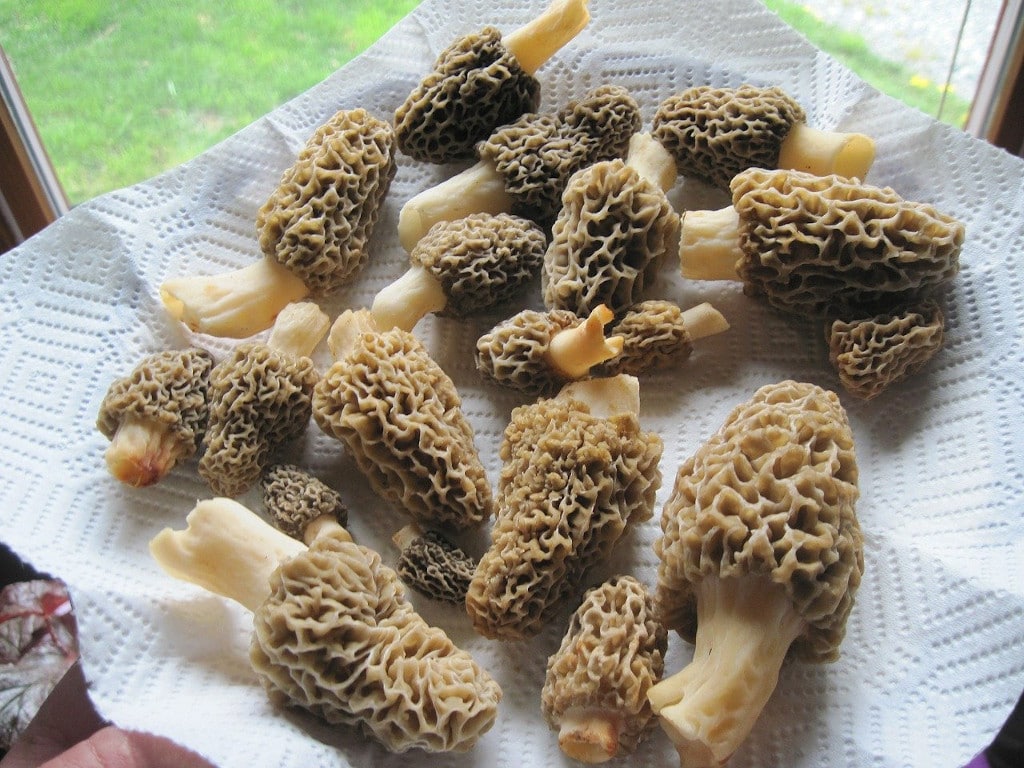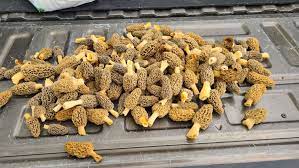6 Mistakes You’re Making Cooking Mushrooms
Say goodbye to soggy mushrooms by avoiding these six simple cooking pitfalls.
6 Mistakes You’re Making Cooking Mushrooms
Forget about soggy mushrooms by avoiding these six simple pitfalls:.Add salt before putting mushrooms in the pan to draw out the water from them.Mushrooms have a ton of liquid in them; the real flavor comes out when that liquid is cooked out.Always wash your mushrooms whole, never after they are cut.Mushrooms soak up everything, so they often require a lot of oil at the start.Don’t go too low or high on the heat, which can mess up your mushrooms. Always cook them on medium heat.Thinly sliced mushrooms are great as a pizza topping, but you don’t want to cook mushrooms sliced super thin
SKIP ADS
Mushrooms are a delicious veggie for stirring into soups, sautéing for pasta dishes, or replacing meat for a hearty plant-based burger. But the beloved mushroom can easily end up ruining a dish, instead of improving it, if not cooked properly. From incorrect prepping to poor ingredient pairings, these are six mistakes you’ll want to avoid for tasty mushrooms.
Here are a few do’s and don’ts for cooking mushrooms, as explained by experts:
Salting Right Away
“Adding salt before throwing mushrooms in the pan or immediately after will draw out the water from them, making them simmer in their own liquids,” says Sofia Norton, RD. This can result in rubbery and tough mushrooms with little flavor. “Add salt after they’ve caramelized near the end of cooking,” she says, which will help them have the taste and texture you’re looking for.
Not Cooking Long Enough
“Properly cooking mushrooms on the stovetop requires more heat and time than most people give,” says Nick Schmuck, chef and partner at Walden. “Mushrooms have a ton of liquid in them, and the real flavor comes out when that liquid is cooked out. Be careful not to over-cook, but give them enough time to bleed out all of their juice in the cooking process,” he says. It will be very obvious when they are no longer giving off liquid. And after that point you can get some delicious caramelization if you cook them a few more minutes, he says.
Not Washing Them Properly
Not washing mushrooms the right way can make them soggy, says Schmuck. “Certain kinds of mushrooms require washing but mushrooms soak up water quickly and become soggy,” he says. “Always wash your mushrooms whole, never after cutting them. And fill a bowl with water first, then dunk mushrooms and quickly wash, they shouldn’t be in the water for more than 10-15 seconds,” he says. Afterwards, lay them out on a paper towel-lined baking sheet for an hour to dry back out.
Not Using Enough Oil
Mushrooms soak up everything, so they often require a lot of oil at the start, says Schmuck. Get your pan nice and hot, then put oil and the mushrooms. “Add more oil until there is a small amount remaining in the pan. After a few minutes, your pan will likely be filled with mushroom juice,” he says. “Keep cooking the mushrooms through until all the juice is evaporated, by this point some oil will come back out of the mushrooms and you will actually be caramelizing the [food] this is the part that really builds flavor,” he says. If you’re fancy, finish with a little butter and a sprig of thyme for the last minute of cooking, he suggests.
Sautéing on High or Low Heat
Don’t go too low or high on heat, which can make mushrooms over or under-cooked. Think right in the middle. “Medium-high heat is the way to go with mushrooms. You want their liquids to slowly evaporate while they caramelize,” says Norton. High heat can burn mushrooms, while low heat will make them cook in their own liquid, she says.
You also want to be mindful of the pan. “A cast-iron skillet or another thick pan that can hold heat well is best for mushrooms,” says Norton. Mushrooms need time and lots of heat to cook well, and a thinner pan might not heat evenly or predictably, so using a thicker pan will help you avoid burning or undercooking the mushrooms.
Slicing Them Too Thin
Thinly sliced mushrooms are great as a pizza topping, but you don’t want to cook super-thin mushrooms. “When using them for soups, stews, sauces, and baking cut them to at least ½ an inch thickness. Mushrooms tend to shrink during cooking, so thicker pieces help offset this and give body and texture to your meals,” says Norton. What’s more, smaller mushrooms can even be prepared whole, while oyster mushrooms are great torn instead of sliced, she says.
Related Content:
- Can (And Should) You Freeze Mushrooms?
- Chef John’s Best Mushroom Recipes
- What Are Morel Mushrooms and How Do You Cook With Them?
HOW TO COOK
COOKING WITH FRUITS AND VEGETABLES
5 Ways to Cook Morel Mushrooms (If You’re Lucky Enough to Find Some)
5 Ways to Cook Morel Mushrooms (If You’re Lucky Enough to Find Some)
‘Tis the season for one of the most treasured and tasty mushrooms on Earth. If you can spot and snag some, here are the best ways to cook morel mushrooms to put your harvest to delicious use.
Ways to Cook Morel Mushrooms (If You’re Lucky Enough to Find Some)
‘Tis the season for one of the most treasured and tasty mushrooms on Earth. If you can spot and snag some, here are the best ways to cook morel mushrooms to put your harvest to delicious use.
SKIP ADS
The first bite I ever took of these unique mushrooms was in a risotto. A bed of lusciously creamy arborio rice came blanketed in sautéed local mushrooms, including the stand-out morels. Each bite was better than the last. From that moment on, I kept my eyes peeled for more morels, both on menus and in the wild.
Luckily, I spotted them soon after in another dish. This time, the mushrooms topped ricotta-slathered toast, which came complete with nature’s best condiment: a runny egg yolk. Perhaps I’ve been spoiled by a couple of creations that would have been delicious nonetheless, but what made the dishes truly memorable were the morels.
Related: 5 Morel Mushroom Facts You Might Not Have Known
These mushrooms are particularly coveted because they are one of the few edible items we savor that aren’t farmed or raised; they’re only grown and gathered in their native, wild habitat. Morels are fairly rare (hence the fierce competition come mushroom hunting season) and only pop up in specific weather conditions for just a couple months each spring. Their scarcity is a big reason morels sell for such top dollar (one pound can sell for anywhere between $20 and $100!).
Unlike some other varieties of mushrooms that can err on the slimy side in certain recipes, morels have a nutty, toasted flavor and meaty texture that stands up beautifully once cooked.
So how do you cook these treasures, if you’re lucky enough to find some? First (and very importantly), give ‘em a good clean, then consider one of these delicious methods for cooking morel mushrooms.
How to Cook Morel Mushrooms
Once your morels are sufficiently cleaned (thoroughly rinsed in cold water then briefly soaked in lightly salted water), you’re ready to start cooking.
Fry Morels
Seemingly the most popular way to cook morel mushrooms is by frying. Here’s how to fry morels to enjoy right out of the pan or added to burgers and other dishes you’d add your usual fried mushrooms to.
- Preheat the skillet over medium heat and melt a good chunk of butter. The amount you’ll need depends on how many mushrooms you’re cooking. You can always add more butter as you cook, if needed.
- Prep your coating or breading. Some folks swear by just a bit of flour, others seasoned bread crumbs. I’m a fan of crushed crackers because they’re already seasoned (even if just with salt). Crush crackers in a zip-top bag and dump into a bowl.
- Crack a couple of eggs in a separate bowl and beat well.
- Coat cleaned morels in egg, then crackers, and pop them in that butter-coated skillet. Sauté about 5 minutes or until golden brown and crispy for pan-fried morels that will have everyone reaching for more.
Sauté Morels
Sautéeing is a splendid way to showcase morel mushrooms for pure morel flavor. For best results, cook in a dry skillet for 5 minutes in small batches (only what covers the skillet surface in a single layer), and turn a few times until golden brown and tender. Remove one batch, then replace with the next until you have all of the morels tender. Season as desired
For more flavor, follow directions in this Sautéed Mushroom Medley and return all the mushrooms back to the skillet and add equal parts butter and oil. Stir in some diced shallots and a dash of bourbon and cook until the liquid has evaporated. Season to taste with salt and pepper.
Pretty much anything can be enjoyed in pizza form. Even dessert. This creative savory pie skips standard sausage and pepperoni, and instead calls for a full-on celebration of spring. Toss halved morels and diced asparagus in a skillet (like this Farberware Skillet with Lid, $29.99, Target) with shallots, fresh thyme, and a splash of white wine for a next-level pizza topping combo. Alongside the nutty gruyere cheese, the morels really shine.
GET THE MOREL PIZZA RECIPE
Simmer Morels
To recreate that risotto at home, I’ve been playing around with this Mushroom Fricassee (aka creamy stewed sauce). Try it yourself: Sauté morels in walnut oil to echo the nutty qualities of the mushrooms (though, more common oils like canola will work just fine), then simmer to tender, bubbly perfection with Madeira cooking wine, whipping cream, chives, and rosemary.
Bake Morels in a Quiche or Savory Tart
In a quiche or a tart, morels make a delightful addition to any brunch menu. Cook the mushrooms in bacon drippings, then combine with eggs, bacon, green onions, thyme, and cheese to fill a flaky, buttery pastry crust. Use our wild mushroom tart as your inspiration.
GET THE MUSHROOM TART RECIPE
I think these are the five best ways to cook morel mushrooms since they really allow the morels themselves to take centerstage. If you’d prefer to keep their flavor and texture a bit quieter, though, consider cooking morels in butter or olive oil and stuffing inside ravioli or blending them into mushroom patties for a meatless burger substitute.






Reviews
There are no reviews yet.